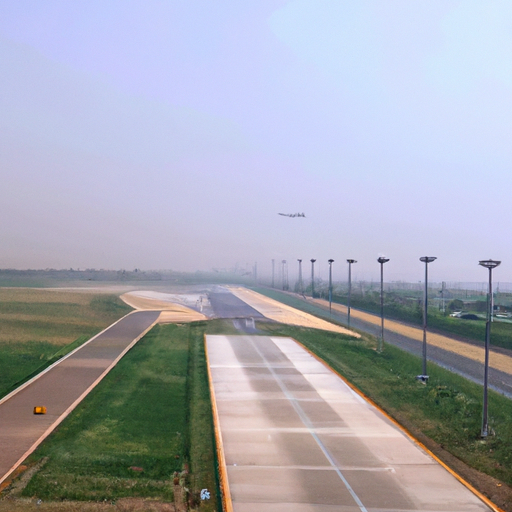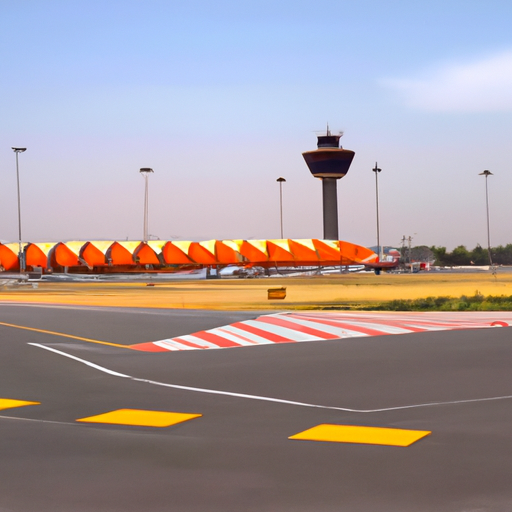
Benefits of Delhi Airport’s Four Operational Runways in India
Delhi Airport Achieves Milestone with 4 Operational Runways in India
Delhi Airport, also known as Indira Gandhi International Airport, has recently achieved a significant milestone by becoming the first airport in India to have four operational runways. This achievement is a testament to the airport’s commitment to providing efficient and seamless air travel experiences for passengers.
One of the major benefits of having four operational runways at Delhi Airport is the increased capacity to handle a higher volume of flights. With more runways available, the airport can accommodate more aircraft simultaneously, reducing congestion and delays. This is particularly important for an airport as busy as Delhi, which serves as a major hub for both domestic and international flights.
Another advantage of having multiple runways is the ability to handle different types of aircraft simultaneously. Delhi Airport is now better equipped to handle a mix of small, medium, and large aircraft, including wide-body jets. This flexibility allows for more efficient scheduling and improved overall operations.
The additional runways also enhance the airport’s ability to handle adverse weather conditions. In the past, inclement weather often led to flight cancellations and delays at Delhi Airport. However, with four operational runways, the airport can better manage weather-related disruptions by rerouting flights and minimizing the impact on passengers.
Furthermore, the increased capacity and improved operational efficiency resulting from the four runways have a positive impact on the local economy. Delhi Airport is a major driver of economic growth in the region, contributing significantly to job creation and attracting investment. The expansion of the airport’s infrastructure, including the addition of runways, further strengthens its position as a key player in India’s aviation sector.
Passengers also benefit greatly from the presence of four operational runways at Delhi Airport. The reduced congestion and improved scheduling result in shorter wait times and smoother travel experiences. Passengers can expect fewer delays and a more seamless transition from arrival to departure.
Additionally, the increased capacity allows for more flight options and better connectivity. Delhi Airport serves as a major connecting hub for both domestic and international flights, and the availability of multiple runways enhances the airport’s ability to offer a wide range of destinations and flight frequencies. This benefits not only passengers traveling to and from Delhi but also those using the airport as a transit point.
The presence of four operational runways also enhances safety at Delhi Airport. With more runways available, the airport can better manage emergencies and handle unexpected situations. The ability to quickly reroute flights and allocate resources efficiently ensures the safety and well-being of passengers and crew.
In conclusion, the achievement of having four operational runways at Delhi Airport is a significant milestone for the aviation industry in India. The increased capacity, improved operational efficiency, and enhanced connectivity benefit not only the airport but also the local economy and passengers. Delhi Airport’s commitment to providing a seamless and efficient travel experience is evident in this achievement, and it sets a benchmark for other airports in the country to aspire to.
How Delhi Airport’s Milestone Impacts Air Travel in India

Delhi Airport Achieves Milestone with 4 Operational Runways in India
Delhi Airport, one of the busiest airports in India, has recently achieved a significant milestone by becoming the first airport in the country to have four operational runways. This achievement is set to have a profound impact on air travel in India, improving efficiency, reducing congestion, and enhancing the overall travel experience for passengers.
With the addition of the fourth runway, Delhi Airport now has the capacity to handle more flights and accommodate a higher number of passengers. This means shorter waiting times, faster check-ins, and smoother boarding processes. The increased capacity will also allow for more flexibility in scheduling, reducing delays and cancellations, and ensuring a more reliable travel experience.
The additional runway will also help alleviate congestion at the airport, which has been a persistent issue in recent years. With the growing number of domestic and international flights, Delhi Airport has often faced overcrowding, leading to long queues, crowded terminals, and delays. The fourth runway will help distribute the air traffic more evenly, reducing congestion and improving the overall flow of passengers and aircraft.
Furthermore, the new runway will enhance safety measures at the airport. With more runways available, there will be a reduced risk of runway incursions and collisions, as well as improved emergency response capabilities. This will provide passengers with a greater sense of security and peace of mind while traveling through Delhi Airport.
The milestone achieved by Delhi Airport is not only significant for the airport itself but also for the entire aviation industry in India. As one of the major hubs in the country, Delhi Airport plays a crucial role in connecting various cities and regions. The addition of the fourth runway will further strengthen its position as a key transportation hub, facilitating better connectivity and accessibility for both domestic and international travelers.
Moreover, the increased capacity and improved efficiency at Delhi Airport will have a positive impact on the economy. With smoother operations and reduced delays, airlines will be able to operate more efficiently, leading to cost savings that can be passed on to passengers in the form of lower fares. Additionally, the improved travel experience at the airport will attract more tourists and business travelers, boosting the tourism and hospitality sectors in the region.
In conclusion, Delhi Airport’s achievement of having four operational runways is a significant milestone for air travel in India. The increased capacity, reduced congestion, and improved safety measures will enhance the overall travel experience for passengers. This milestone will also have a positive impact on the aviation industry and the economy as a whole. Delhi Airport’s commitment to continuous improvement and innovation sets a benchmark for other airports in India and around the world.
Future Expansion Plans for Delhi Airport’s Runway Capacity
Delhi Airport Achieves Milestone with 4 Operational Runways in India
Delhi Airport, also known as Indira Gandhi International Airport, has recently achieved a significant milestone in the aviation industry by becoming the first airport in India to have four operational runways. This achievement is a testament to the airport’s commitment to providing world-class facilities and services to its passengers.
With the addition of the fourth runway, Delhi Airport has significantly increased its runway capacity, allowing for smoother operations and reduced congestion. This is a crucial development considering the airport’s growing passenger traffic, which has been steadily increasing over the years.
The expansion of runway capacity at Delhi Airport is part of the airport’s future expansion plans. The airport authorities have recognized the need to accommodate the increasing number of flights and passengers and have taken proactive measures to ensure a seamless travel experience for all.
One of the key benefits of having four operational runways is the ability to handle more flights simultaneously. This means that the airport can accommodate a higher number of takeoffs and landings, reducing waiting times for both airlines and passengers. This increased capacity will also help in reducing flight delays and improving overall operational efficiency.
In addition to the increased runway capacity, Delhi Airport is also investing in state-of-the-art technology and infrastructure to further enhance its operational capabilities. The airport authorities are constantly exploring innovative solutions to improve air traffic management, optimize runway usage, and enhance safety measures.
Furthermore, Delhi Airport is also focusing on sustainability and environmental conservation in its expansion plans. The airport authorities are committed to minimizing the environmental impact of its operations and have implemented various measures to reduce carbon emissions and promote energy efficiency.
As part of its future expansion plans, Delhi Airport is also considering the construction of a fifth runway. This additional runway will further enhance the airport’s capacity and enable it to handle even higher passenger traffic in the coming years. The airport authorities are conducting feasibility studies and engaging with relevant stakeholders to ensure that the expansion plans are executed seamlessly.
The addition of a fifth runway will not only benefit the airport but also contribute to the overall growth and development of the aviation industry in India. It will attract more airlines to operate at Delhi Airport, leading to increased connectivity and improved accessibility for passengers traveling to and from the capital city.
Delhi Airport’s achievement of having four operational runways is a significant milestone in the aviation industry in India. It reflects the airport’s commitment to providing world-class facilities and services to its passengers. With its future expansion plans, including the construction of a fifth runway, Delhi Airport is poised to become one of the leading airports in the world, setting new benchmarks for operational efficiency, sustainability, and passenger experience.
In conclusion, Delhi Airport’s achievement of having four operational runways is a remarkable feat that highlights the airport’s dedication to meeting the growing demands of the aviation industry. With its future expansion plans, the airport is well-positioned to handle the increasing passenger traffic and provide a seamless travel experience for all. Delhi Airport’s commitment to sustainability and environmental conservation further adds to its appeal as a leading airport in India.


